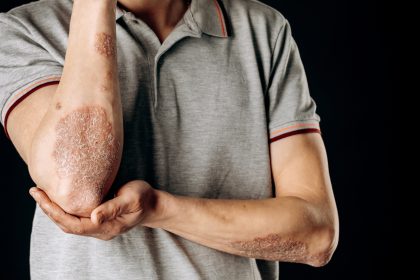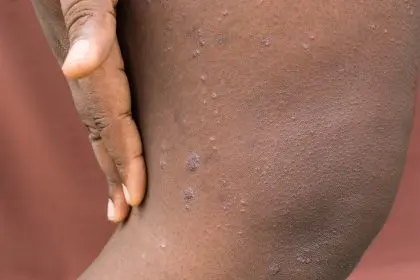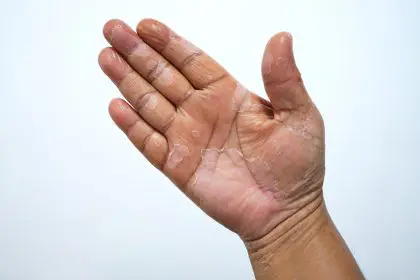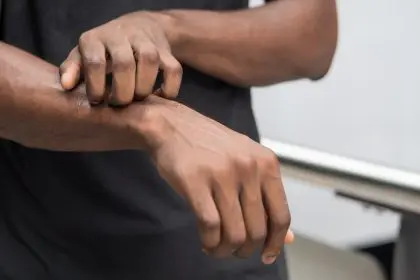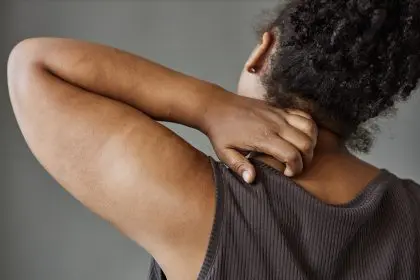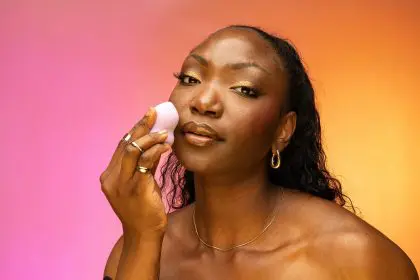Learn how to identify benign age spots from cancerous growths with our expert-backed guide to skin health protection
What exactly are sunspots?
Those flat brown marks appearing on your skin after years of sun exposure might be causing cosmetic concerns, but they rarely pose health risks. Sunspots, also called age spots or liver spots, develop gradually on areas frequently exposed to ultraviolet rays.
These pigmented patches typically appear on the face, shoulders, backs of hands, and forearms. They range from light brown to black in color and remain flat against the skin. While completely benign, many people seek removal treatments purely for aesthetic reasons.
Sunspots form when UV exposure accelerates melanin production in specific skin areas. This melanin, the pigment responsible for skin color, concentrates in certain spots rather than distributing evenly across the skin’s surface.
People with fair skin tones or those who spend considerable time outdoors without sun protection face higher risks of developing these marks as they age.
The 7 telltale differences between sunspots and skin cancer
When examining your skin, these key distinctions can help you differentiate between harmless sunspots and potentially dangerous cancerous lesions:
- Texture: Sunspots remain consistently flat, while skin cancers often develop raised portions or textural changes over time.
- Border definition: Sunspots typically have smooth, clearly defined edges. Cancerous growths frequently display irregular, notched, or blurry borders.
- Color consistency: Benign sunspots maintain uniform coloration throughout, whereas skin cancers often contain multiple colors or show uneven pigmentation.
- Growth pattern: Sunspots develop gradually and maintain stable size and appearance. Skin cancers tend to change in size, shape, or color over weeks or months.
- Surface characteristics: The surface of sunspots remains smooth without scaling, bleeding, or crusting. Cancerous lesions may crack, bleed, ooze, or develop crusty patches.
- Sensation: Sunspots cause no physical discomfort. Skin cancers might produce itching, tenderness, or pain when touched.
- Distribution pattern: Sunspots typically appear in groups in sun-exposed areas. While skin cancers can also develop in sun-exposed regions, they often appear as isolated growths rather than in clusters.
Common types of skin cancer to watch for
Skin cancer presents in several forms, each with distinct characteristics that differentiate them from harmless sunspots.
Basal cell carcinoma, the most common type, often appears as pearly, waxy bumps or flat, flesh-colored lesions resembling scars. These growths might develop a central depression and occasionally bleed.
Squamous cell carcinoma typically presents as red, scaly patches or raised growths with a crusty surface. They may develop open sores that fail to heal properly.
Melanoma, though less common, represents the most dangerous form of skin cancer. Medical professionals recommend using the ABCDE method to identify potential melanomas:
A – Asymmetry: One half looks different from the other B – Border: Edges appear ragged, notched, or blurry C – Color: Shows multiple colors including brown, black, red, or blue D – Diameter: Larger than a pencil eraser (about 6mm) E – Evolving: Changes in size, shape, color, or starts bleeding
Treatment approaches for sunspots
Since sunspots pose no health concerns, treatments focus entirely on cosmetic improvement. Common procedures include:
Laser therapy targets the excess melanin, breaking it down without damaging surrounding tissue. Multiple sessions may be required for optimal results.
Chemical peels remove the top skin layers using specialized solutions, revealing fresher skin underneath and diminishing the appearance of sunspots.
Cryotherapy freezes affected areas with liquid nitrogen, causing the darkened skin to slough off as it heals.
Prescription lightening creams containing hydroquinone or retinoids can gradually fade sunspots over months of consistent application.
Skin cancer treatment necessities
Unlike the cosmetic-focused treatments for sunspots, skin cancer interventions aim to eliminate cancerous cells and prevent spread.
Surgical excision removes the entire growth along with a margin of healthy tissue. This remains the primary treatment for most skin cancers.
Mohs surgery, particularly effective for facial cancers, removes thin layers sequentially while checking each for cancer cells until reaching cancer-free tissue.
For advanced cases, doctors may recommend radiation therapy, immunotherapy, or targeted drugs depending on cancer type and stage.
Prevention strategies for both conditions
Both sunspots and skin cancer share a common preventable cause: excessive UV exposure. Implementing these protection measures helps avoid both conditions:
Apply broad-spectrum SPF 30+ sunscreen daily, reapplying every two hours during outdoor activities. Even on cloudy days, UV rays penetrate clouds and cause damage.
Wear protective clothing including wide-brimmed hats, UV-blocking sunglasses, and long sleeves when spending extended time outdoors.
Seek shade between 10 a.m. and 4 p.m. when UV radiation reaches peak intensity.
Avoid tanning beds completely, as they emit concentrated UV radiation that dramatically increases skin cancer risk.
Perform monthly self-examinations, checking your entire body for new spots or changes to existing ones.
Schedule annual skin checks with a dermatologist, especially if you have fair skin, numerous moles, or family history of skin cancer.
When to consult a medical professional
While distinguishing between sunspots and skin cancer helps guide your skin care, certain situations demand professional evaluation regardless of your self-assessment.
Make an appointment with a dermatologist if you notice:
Any spot changing in size, shape, or color
New growths that appear different from your other spots
Lesions that bleed, itch, or do not heal
Spots with irregular borders or variable coloration
Any skin growth causing concern or anxiety
Early detection significantly improves treatment outcomes for skin cancer. When spotted early, most skin cancers respond well to treatment, with cure rates exceeding 90 percent.
Regular skin monitoring combined with consistent sun protection measures provides your best defense against both unsightly sunspots and dangerous skin cancers, keeping your skin healthy for years to come.


